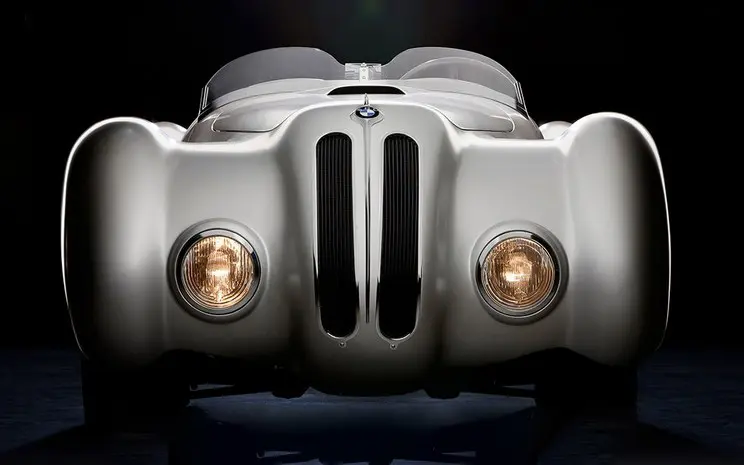Independently designed cars

The replacement of the independent front suspension on the 3/15 PS DA-4 was not very successful. During prototype testing, there were structural issues that led to accidents, and the subsequent production models did not achieve the expected performance. German media personality and automotive engineer Josef Ganz harshly criticized this car. The main reason for these issues was the design limitations based on the Austin 7’s 3/15 series structure. Furthermore, as the license for the Austin 7 was set to end in 1932, BMW was reluctant to invest further resources into the 3/15 series. Consequently, they began to work on designing their entirely new model and even invited Josef Ganz to serve as a special consultant for the new car’s design.
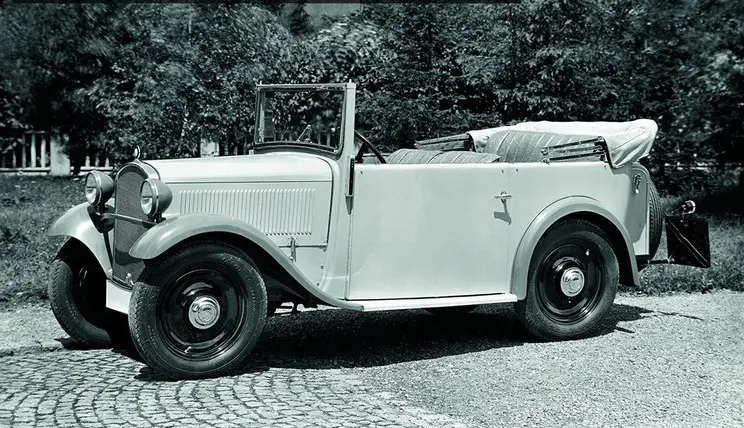
Today, some domestic car manufacturers in China tend to keep the chassis structure unchanged after importing foreign car technologies. Each generation update only involves changes to the exterior and powertrain. However, over 80 years ago, BMW took the opposite approach. The independently designed 3/20 series maintained the style of the Austin 7 series, and the engine was based on the inline-four engine from the 3/15 (increasing the maximum power from 15 horsepower to 20 horsepower). However, the chassis structure underwent a completely new design. The 3/20 abandoned the “A”-type frame of the Austin 7 in favor of a central-beam frame, with its front suspension inherited from the 3/15 DA-4, while the rear suspension was changed to a swing-axle independent suspension.

The BMW 3/20 PS AM-1 was officially launched in 1932, replacing the 3/15 series which had ceased production due to the expiration of its license. Over the following two years, BMW introduced the AM-2, AM-3, and AM-4 models within this series. It’s worth mentioning that the “AM” in the names of these cars stands for “Automobil München” in German, which translates to “Automobile Munich.
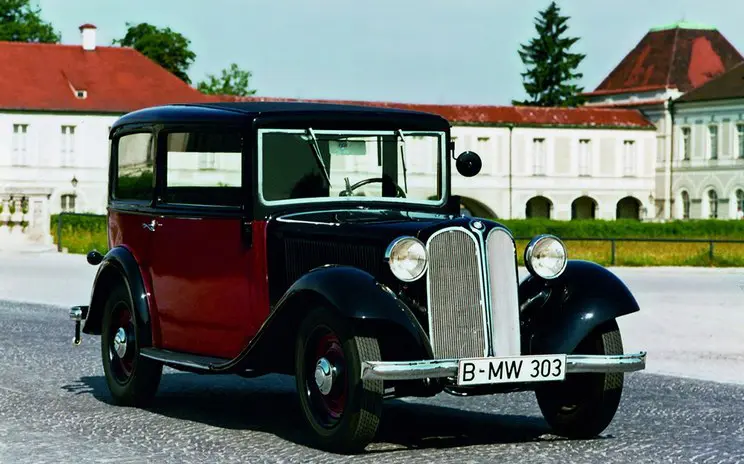
While producing the 3/20 series, BMW also developed a larger model: the 303. This car had a wheelbase of 2400mm and a total length of 3900mm, which increased by 250mm and 700mm respectively compared to the 3/20. There were significant changes in the chassis structure as well. The central-beam frame of the 3/20 series had complex production processes, high costs, and lacked effective side protection. Therefore, it was replaced with a more traditional ladder frame in the 303 model. Similarly, the rear suspension was also changed to a traditional but low-failure-rate non-independent suspension in the 303 by BMW.
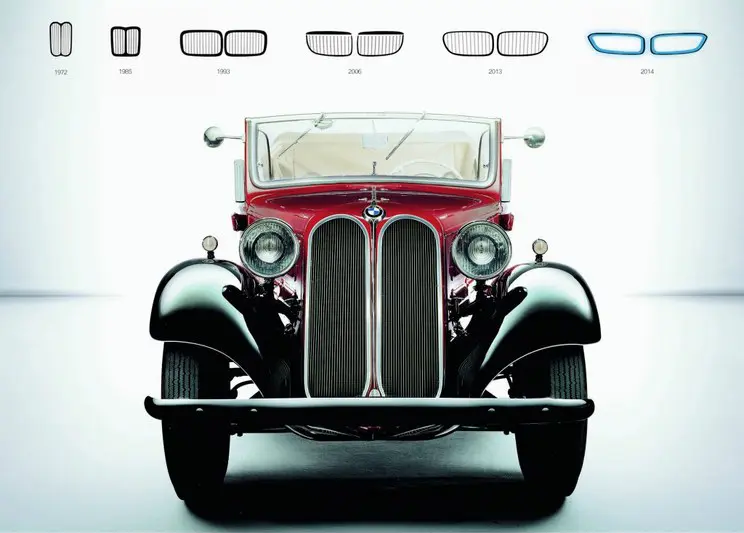
The larger body required a more powerful engine, and BMW developed the M78 inline-six engine based on the 3/20’s inline-four engine. This engine had a displacement of only 1.2 liters, with a maximum horsepower and peak torque of 30 horsepower and 68 Newton-meters, respectively. The M78 was BMW’s first inline-six car engine, making the BMW 303, which was equipped with it, the brand’s first inline-six model. In addition to the inline-six engine, the “twin kidney” grille, used for the first time on the 303, has also become a classic element in the BMW brand’s heritage.

On the platform of the BMW 303, the company also developed several other models. Apart from the four-cylinder 309, all other models were equipped with the M78 series inline-six engine. The engine displacement of the 315 was increased to 1.5 liters, directly replacing the 303 that ceased production in 1934. The 319, which was introduced in 1935, used a 1.9-liter version of the engine and could be considered as a higher-end version of the 315. Based on the 315 and 319, BMW also released two sports car versions: the 315/1 and 319/1. Their chassis were the same as their respective original models, but they were fitted with a two-door, two-seat convertible Roadster body structure, along with a retuned high-power engine. The production of the 315 and 319 ceased in 1937, after which BMW introduced the final model on the 303 platform, the 329. However, the 329 was replaced by other models by the end of the same year in 1937.
Move towards the high-end market

From the authorized 3/15 to the latest 303 series, BMW’s small family cars have become popular, so the Munich car company began to set its sights on the more high-end market. The BMW 326 was officially unveiled at the Berlin Motor Show in February 1936. It was a mid-size sedan positioned in the luxury market, with a wheelbase of 2870mm. The 326 has three body versions: four-door hardtop and four/two-door convertible. Its four-door version has also become the first four-door model of the BMW brand.

In terms of technology, the 326 uses a novel torsion bar spring front suspension, and the hydraulic braking system also appears in a BMW model for the first time. Its 2.0L straight six engine is developed from the 329, with a maximum power of 50 horsepower and a maximum power of 50 horsepower. The vehicle speed can reach 115km/h. As a luxury model, the BMW 326 is not as cheap as previous small cars, but it has good sales. From 1936 to the discontinuation of production in 1941, BMW produced a total of nearly 16,000 326 models.
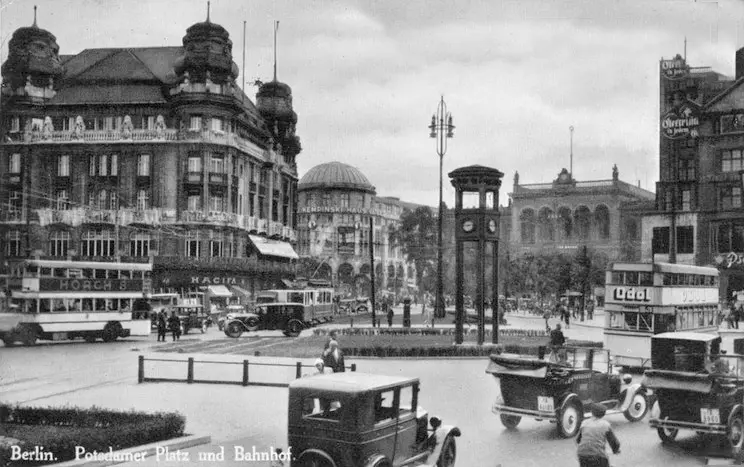
The reason for the sales success of the expensive BMW 326 is naturally its excellent quality and performance, but there is another important reason, and that is the economic prosperity brought about by a series of economic stimulus measures after the Nazis came to power. Some people say that Germany’s pre-war economy was a false prosperity, but many manufacturing companies did develop greatly in it, including BMW. BMW deliberately designed the 326 chassis to be extremely scalable in order to design more models based on it to meet the high-demand market segments at all levels.
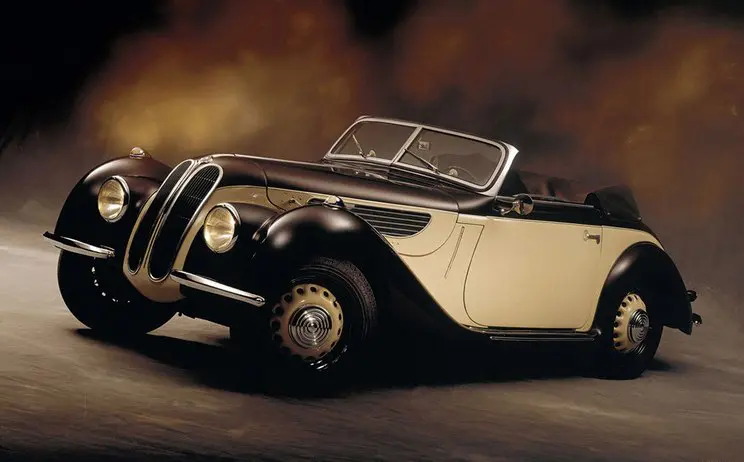
The short-wheelbase version of the 326 platform was the 320, which was positioned as a small family car. It replaced the 329 of the 303 platform in 1937, and its upgraded version, the 321, was launched in 1938. The BMW 327, a medium-sized GT sports car launched in 1937, was also built on the short wheelbase chassis of the 326. The car’s smooth shape design was a typical avant-garde design of the 1930s. In 1939, BMW also launched an extended wheelbase version of the luxury sedan 335 based on the 326. It had a wheelbase of 2980mm and a length of 4840mm. In the slender engine compartment was a 3.5L inline six-cylinder engine with the largest Power 91 horsepower. This was the most high-end model produced by BMW before the war, but with the outbreak of the war, the car also ended its short life.
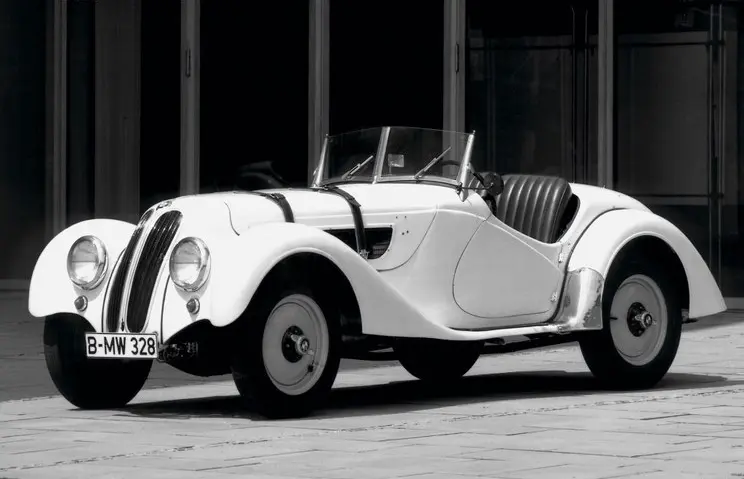
In the last few years of the 20th century, authoritative automobile experts from all over the world organized a “Car of the Century” event, which aimed to select the most influential cars of the 20th century. In March 1999, the Car of the Century entered the final competition. Among the 26 nominated models, the only BMW brand selected is the BMW 328. The 328 mentioned here is not the later 3 Series sedan, but a legendary sports car born in 1936.

The BMW 328 is a replacement for the aforementioned 319/1. Unlike the 319/1, which uses the 303 sedan platform, the 328 is a speed machine designed for performance from beginning to end. Although the 326 platform at the same time was very flexible, BMW, which was not short of money, still insisted on designing an independent chassis for its next sports model. Facts have proved that independent design brings significant benefits. The 328’s steel ladder frame + aluminum body brings good lightweight performance. In the end, this sports car with a full length of 3900mm only has a curb weight of 830kg. In terms of power, the car uses a 2.0L inline six-cylinder engine with a maximum power of 80 horsepower. Driven by it, the top speed of the BMW 328 can exceed 150km/h.

Beautiful performance parameters are not enough to make a car a legend. The glory of the BMW 328 also comes not from the books, but from the racing field. In 1936, the BMW 328 made its debut at the Eifelrennen race at the Nürburgring and won the 2.0L category that day. Over the next 1937 years, it won another 100 races, large and small. At Le Mans, the 328 won the 1939 class title; at the Mille Miglia, it won the 1938 and 1940 class titles. The BMW 328 was discontinued in 1940. At this time, it had won countless laurels for BMW. Even after the war in 1948, when the British Frank Pratt won the Australian Grand Prix, he was still driving a BMW 328 racing car.
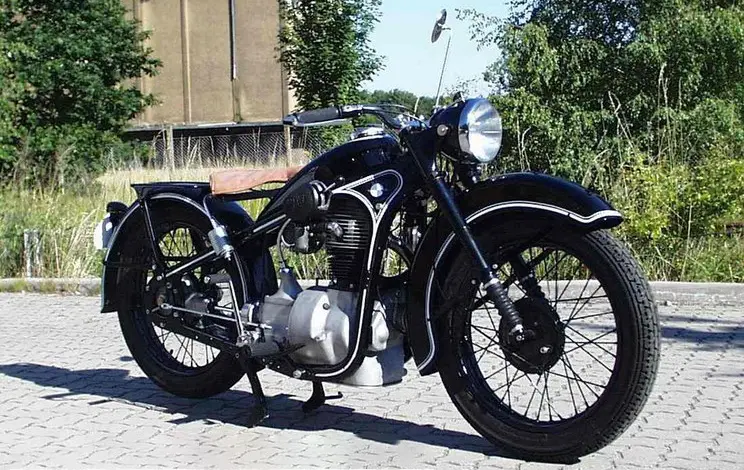
While the automobile business is booming, BMW’s motorcycle product line has also become richer. In 1931, BMW launched the R2 motorcycle for the low-end market. The car used a 198cc single-cylinder engine (at that time, Germany stipulated that motorcycles below 200cc did not require a driver’s license). Coupled with reasonable pricing, the R2 motorcycle achieved great success. It was a great success, with 4,161 units sold in the first year.

Not only the sales of economical motorcycles, BMW motorcycles have achieved higher achievements in technology and performance: the BMW R12 and R17 models launched in 1935 became the first motorcycles in the world to be equipped with hydraulically damped telescopic front forks; On December 28, 1937, BMW driver Ernst Henne set a motorcycle world speed record of 279.5km/h on a 500cc supercharged motorcycle. The record was retained for 14 years.
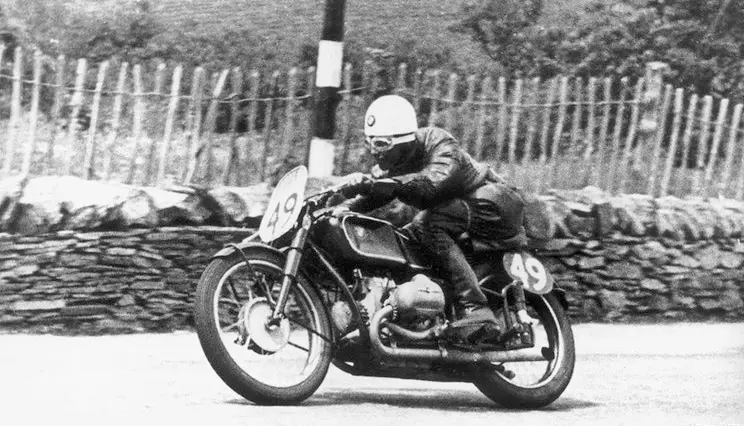
In terms of events, the BMW Motorcycle Team has also made outstanding achievements. The most famous achievement is that BMW rider Georg Meier won the 1939 Isle of Man TT motorcycle race. This race also made Georg Meier the first non-British Isle of Man rider TT champion.

The development of automobiles and motorcycles has not made BMW forget its traditional business-aerospace engine manufacturing. Although Germany was prohibited from developing an air force after World War I, after the Allied powers relaxed controls slightly, the German government began to “save the country through curves” – vigorously developing civil aviation. They used the development of flight sports and civil aviation transportation to provide reserve talents and resources for the air force, it was against this background that BMW resumed its own aero-engine manufacturing.
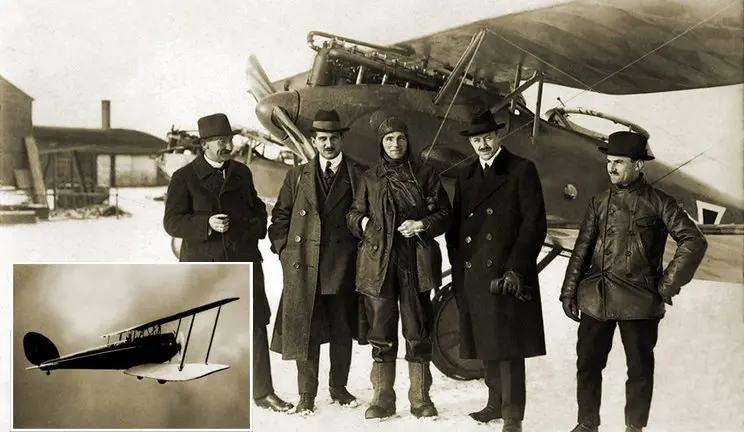
The BMW IV aero engine is the successor to the BMW III series. BMW started mass production of the BMW IV series in the 1920s. It is a water-cooled inline six-cylinder engine with a maximum power of 245 horsepower. In June 1919, German flight pioneer Franz Zeno Diemer flew a DFW F37 aircraft equipped with a BMW IV engine to a flight altitude of 9760m, setting an unofficial flight altitude record.

After that, BMW successively introduced various models of engines such as BMW V, VI, and others. If we were to talk about the most famous aircraft engine from BMW before World War II, it would undoubtedly be the BMW 132, which was introduced in 1933. In fact, tracing back, the BMW 132 was a “knockoff” product: In January 1928, BMW obtained authorization from the American Pratt & Whitney company to produce a German version of the Pratt & Whitney R-1690 “Hornet” engine, which they named the “BMW Hornet.” Soon after, BMW began researching this engine and developed the BMW 132 based on the “Hornet” engine.

The BMW 132 engine had a radial layout with 9 cylinders arranged around the crankshaft, with a total displacement of 27.7 liters. The high-power version had a maximum output of 960 horsepower. In 1938, powered by four BMW 132 engines, a Fw 200 S-1 aircraft completed the first non-stop flight from Berlin to New York in 24 hours and 57 minutes. Moreover, the primary application of the BMW 132 was in the renowned Junkers Ju 52 transport aircraft.

Before World War II, it was active in various busy flights across Europe with Deutsche Lufthansa, making this type of three-engine aircraft with unique corrugated metal skin known to people all over Europe. In addition, the Nationalist Government of Nanjing once jointly established the China-Eurasia Aviation Company with Deutsche Lufthansa, and the Junkers Ju 25 transport aircraft, powered by BMW 132 engines, was once the main aircraft of this company. From this perspective, BMW also contributed to the early civil aviation construction in China.

The purpose of the Nazi Party’s rise to power was not only to revitalize the German economy; the government’s massive investment in the aviation industry was not simply for the development of civilian aviation. In fact, everyone knew the underlying purpose—war. In September 1939, the German military invaded Poland, triggering the start of World War II. As a primary transport aircraft for Germany, the Ju 52 was involved in almost every major military operation of the German military. This transport plane, powered by three BMW engines, transitioned from being a hero in civilian aviation to becoming an accomplice in war.
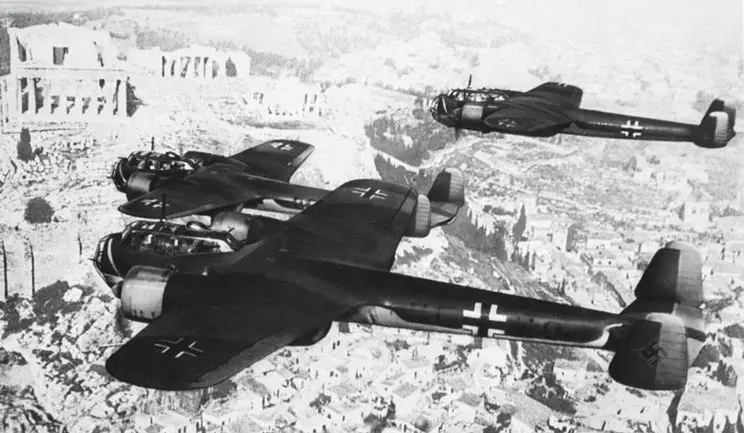
It’s likely that there is no one in the world who loves war more than arms dealers. As one of Germany’s most important aircraft engine manufacturers, BMW would also profit immensely from the military’s endless orders. However, the company’s CEO, Franz Josef Popp, was not pleased by this prospect. The hardships of the end of World War I were still fresh in his memory, and he believed that if the company were to focus primarily on military orders, it would essentially tie its fate to the policies of the Nazi authorities. In a letter to the chairman of the supervisory board in 1940, Popp wrote, “If there are any setbacks in the development of aircraft engines, it will pose a fatal threat to the entire company.”

Although not even recognized by the general manager, BMW still joined the Nazi war machine. This was because as the war progressed, Nazi policies and the military became more and more involved in BMW, and Popp’s authority in the company gradually weakened. . Since BMW’s automobile products did not include military vehicles, its automobile production was completely stopped as early as 1940. If you look at its automobile product list, you will find that it was blank throughout World War II. All that remains about the car are some repair tools and a limited design studio.
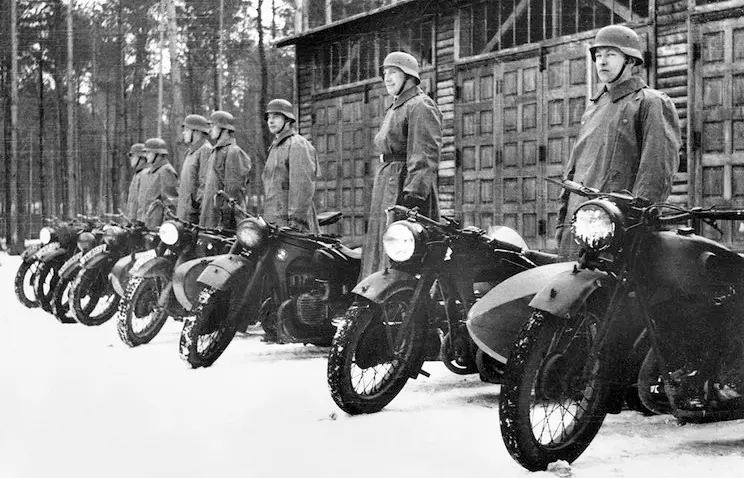
Unlike cars, BMW’s motorcycle products have entered the German military’s field of vision very early. Motorcycles have the advantages of economy and flexibility, coupled with the reliable quality of BMW’s products, so the German army purchased a large number of BMW motorcycles to equip its motorized troops. BMW stopped supplying motorcycles to the civilian market in 1941, and all its products went to the military, including R12, R35, R71 and R75 models.

Among BMW’s military motorcycles, the most famous may be the R75 motorcycle. It was a military motorcycle specially developed by BMW in 1938 to meet the needs of the German Army. This is a heavy-duty side three-wheel motorcycle powered by a 26-horsepower 745cc “Boxer” engine. In the harsh environment of the North African battlefield, the BMW R75 motorcycle showed strong adaptability. Its horizontally opposed engine is more conducive to heat dissipation. In addition, its shaft transmission is less susceptible to gravel damage than chain transmission. The reliability of the R75 made the US military envious. They strongly suggested that Harley also produce a similar shaft drive motorcycle. To this end, Harley developed its first shaft drive model, the XA. This car can basically be regarded as the BMW R75 of replicas.
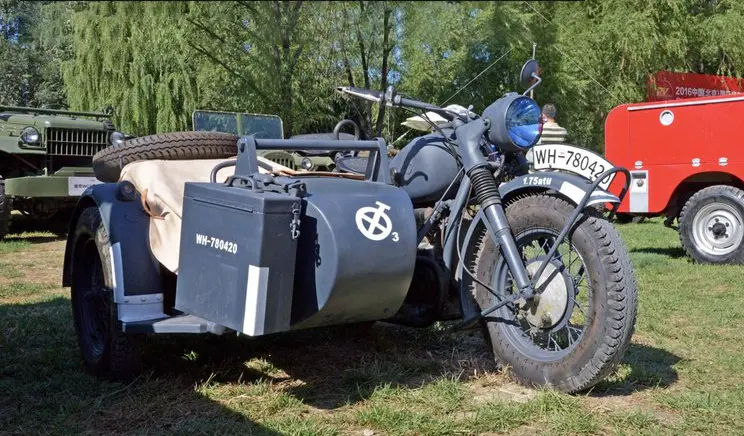
Compared with the R75, domestic friends should be more familiar with the BMW R71. It is also a heavy-duty side three-wheel motorcycle, but it is lighter than the R75. During World War II, the Soviets also took a fancy to the reliability of BMW motorcycles, so they secretly obtained five BMW R71s while the German army was fighting in Poland. Through disassembly and mapping, they copied their own M72 motorcycles. The M72 did not completely copy the design of the R71. Instead, while retaining the basic power structure of the R71, it made some “simplified configurations” and removed configurations such as side bucket heating. After World War II, the Soviet Union transferred the M72 technology to other socialist countries. China developed the familiar Yangtze 750 motorcycle based on the information provided by the Soviet Union. Because the car has a sidecar, Chinese people call it the “Wanzi”.

BMW’s military motorcycles were excellent, but they were not as important as aircraft after all. Therefore, in early 1942, BMW’s motorcycle production was transferred to the Eisenach factory so that the Munich factory could fully produce aero engines. A few months later, as the needs of the Air Force continued to grow, motorcycle manufacturing was completely abandoned, and BMW’s only business was aerospace engines.

As the main force of the German Air Force in World War II, the Fw 190 fighter jet produced by Focke-Wulf was considered one of the most successful fighter jets during World War II. The early model of this fighter jet was equipped with BMW’s BMW 801 aero engine. The BMW 801 was developed in 1939. Its 14 cylinders adopt a double-layer star layout and can produce a maximum power of 1560-2000 horsepower depending on the version. In addition to the Fw 190, this engine was also installed on the Junkers Ju 88, the main bomber of the German army.

BMW is not only an excellent producer of piston aero engines, but also the world’s earliest jet engine manufacturer. The BMW 003 it developed was the only mass-produced jet engine in Germany during World War II except for the Junkers Jumo 004. Due to the extension of the development cycle of BMW 003, it missed the installation of the famous Me 262 fighter. The final mass-produced aircraft equipped with this engine were the less famous Heinkel He 162 fighter and Arado Ar 234 bomber. BMW produced a total of about 500 BMW 003 engines, but many of them did not have time to be installed on aircraft before World War II ended.
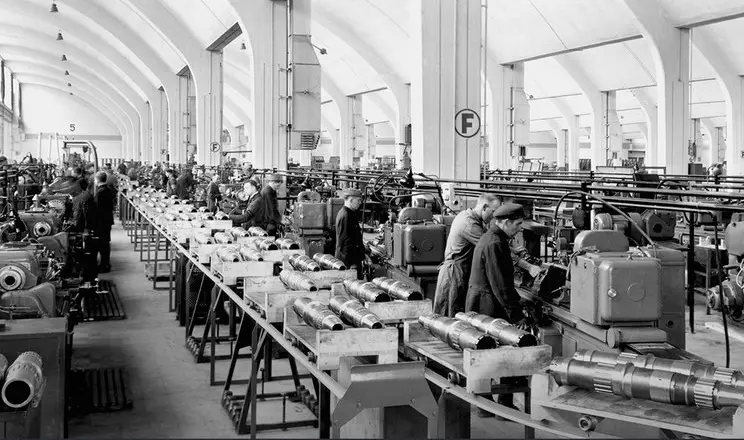
The continuous expansion of the war increased the demand for German aircraft. BMW’s aero-engine production scale also continued to expand. By the end of the war, it had produced tens of thousands of aero engines of various types. In order to maintain large-scale production, BMW began to use forced labor in 1942. These workers included domestic criminals, Eastern European prisoners of war, and prisoners from concentration camps. By the end of the war, 50% of BMW’s 50,000 employees were forced laborers from concentration camps. An introduction to this matter can still be found on the BMW Group’s official website. At the end of the article, you can also see BMW’s shame and remorse for this matter.
Summary:
BMW was born in the flames of World War I. From today’s story, we can see that the ups and downs of this company have been accompanied by the rise and fall of empires, first the German Empire and then the Third Reich. Although BMW tried its best to escape the shadow of the war after World War I and successfully built itself into a comprehensive manufacturing company, when World War II broke out, it still could not control its own destiny, and the company’s production and operations were once again tied to the On the Imperial Chariot.

